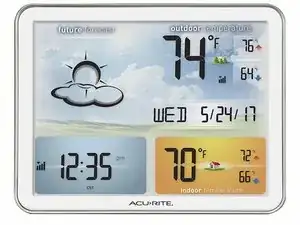Background and Identification
Outdoor thermometers are devices that are designed to detect and display the temperature of the outdoor environment they are located in. Outdoor thermometers have analog or digital displays. They are often designed to be mounted to an outdoor surface (i.e. the outside of a house) or to sit upright on a table or some other piece of outdoor furniture.
Outdoor thermometers vary in physical appearance, but they all include a way to sense the outdoor temperature, a housing, and a way to display the outdoor temperature. The mechanisms for achieving these functions can vary substantially. For instance, standard liquid-based thermometers include mercury or alcohol in a glass tube. As the liquid gets hot, it rises proportionally to the change in temperature. With accurately placed markings, these thermometers can then display the current temperature based on where the liquid is in the tube. More modern outdoor thermometers utilize electronic temperature sensing technology. They achieve this by taking advantage of a scientific property: the resistance in metal (how easy it is for electricity to flow through it) changes in accordance with the metal’s temperature. Thus, electronic thermometers emit a voltage across a probe and measure the current flow to deduce the temperature. Electronic thermometers give much faster readings than standard, liquid-based thermometers.


